Abstract
1. Impulses of eighteen muscle spindle afferents from finger extensor muscles were recorded from the radial nerve while subjects performed single joint finger movements of two kinds, i.e. routine and precision, which were nearly identical with regard to kinematics. 2. The firing rates of ten primary and two secondary spindle afferents were higher in the precision movements by more than 10%, although the difference reached statistical significance in only seven of them. In most cases when spindle firing was higher in precision movements the skeletomotor activity was higher as well. 3. The findings indicated that the fusimotor activity was often stronger with precision movements compared with routine movements. This result is in qualitative agreement with several studies on behaving cats, demonstrating higher fusimotor activity in more demanding motor tasks. On the other hand, the effects were much smaller in humans than in cats. Moreover, in contrast to findings from experiments in cats, no support was obtained for the hypothesis that fusimotor activity was adjusted independently of the skeletomotor activity in human finger muscles.
Full text
PDF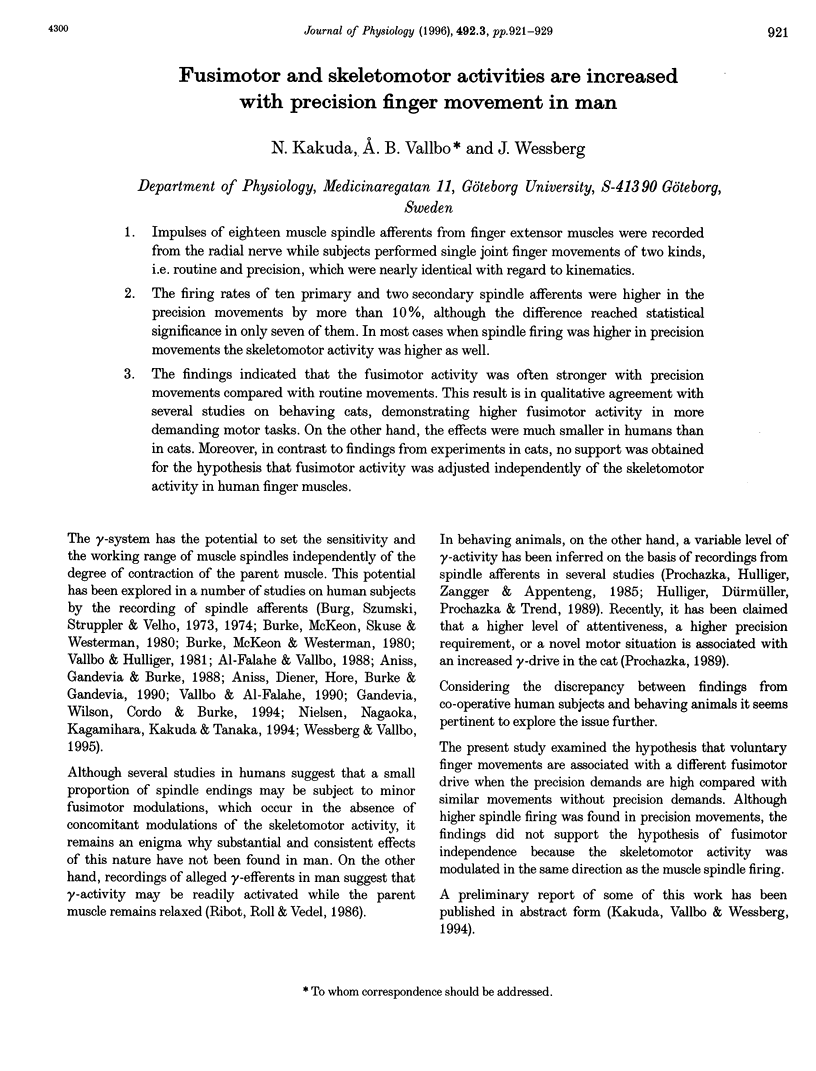
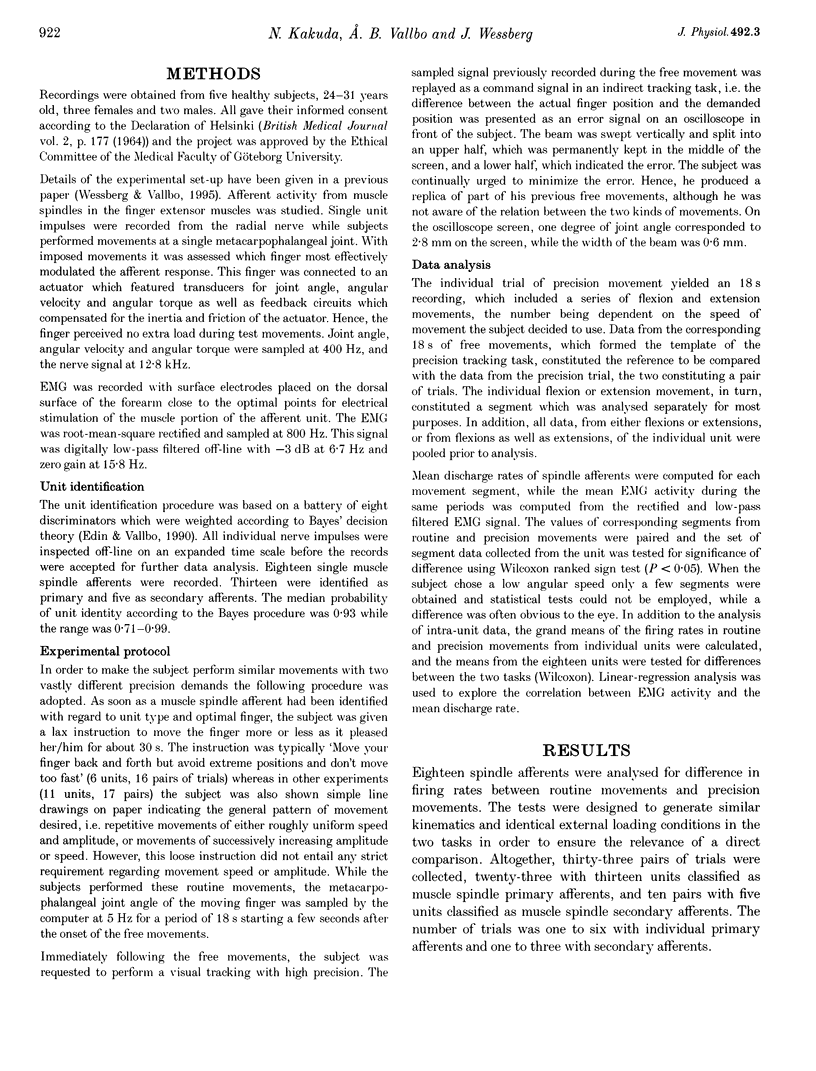
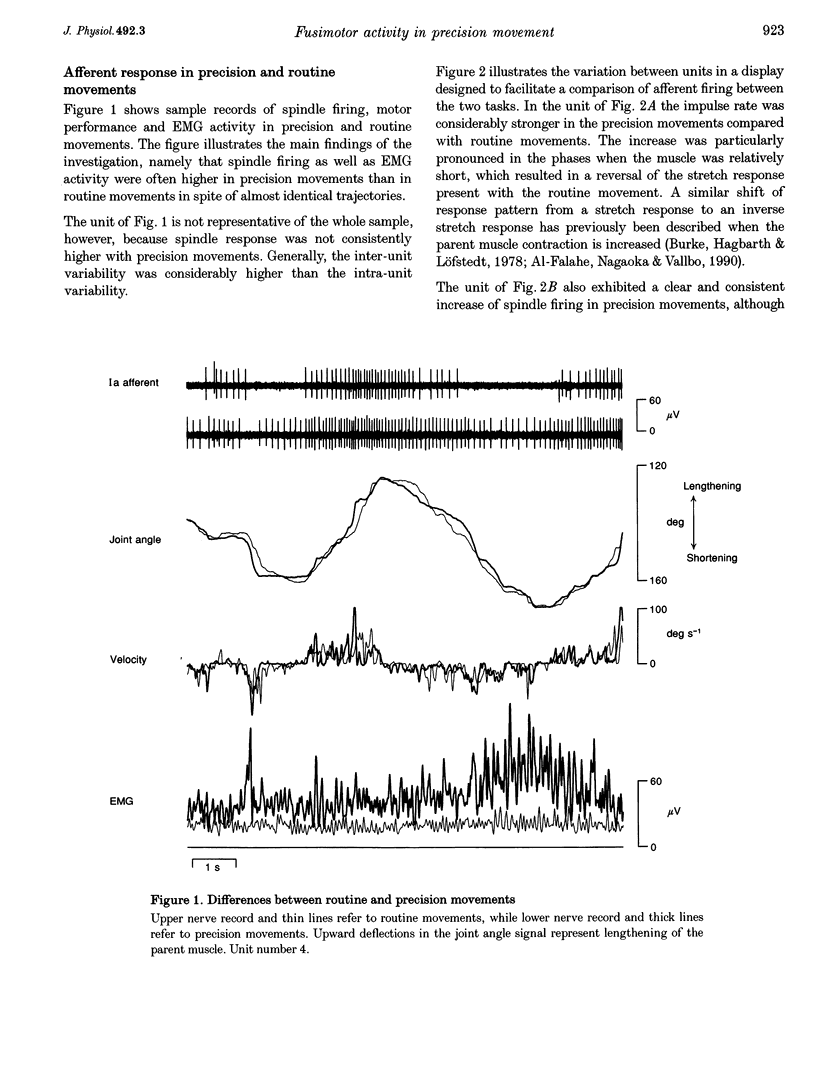
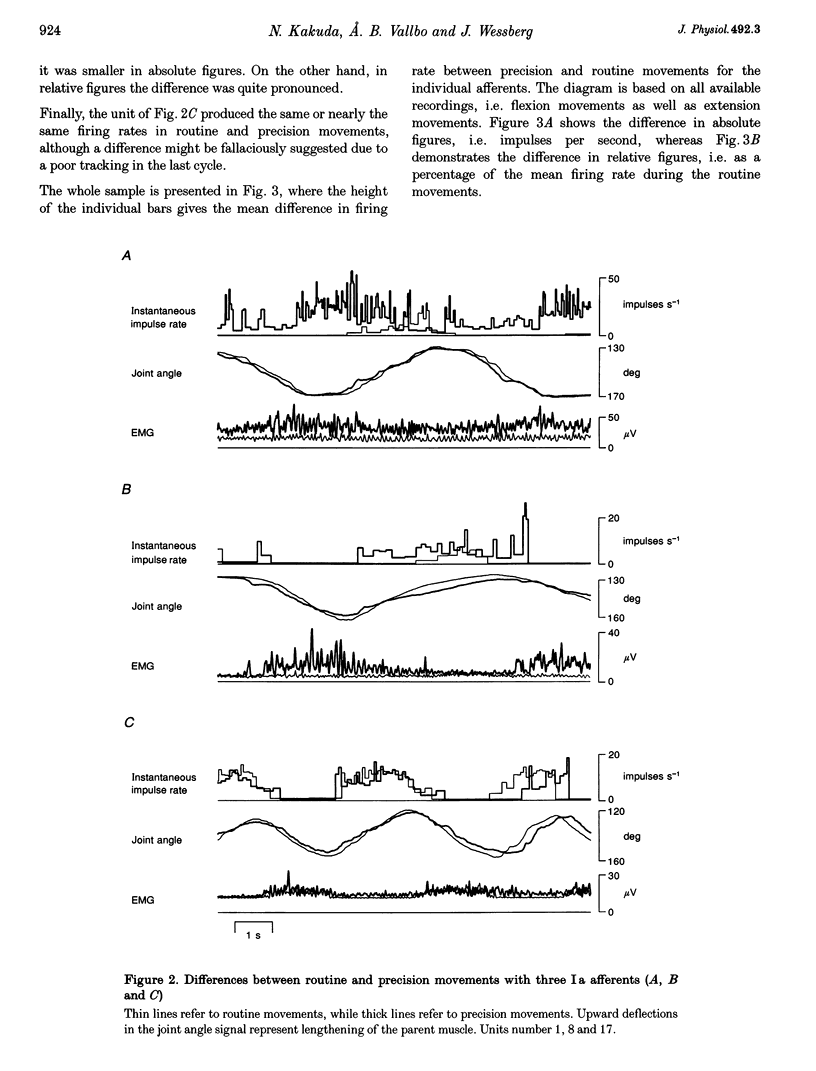
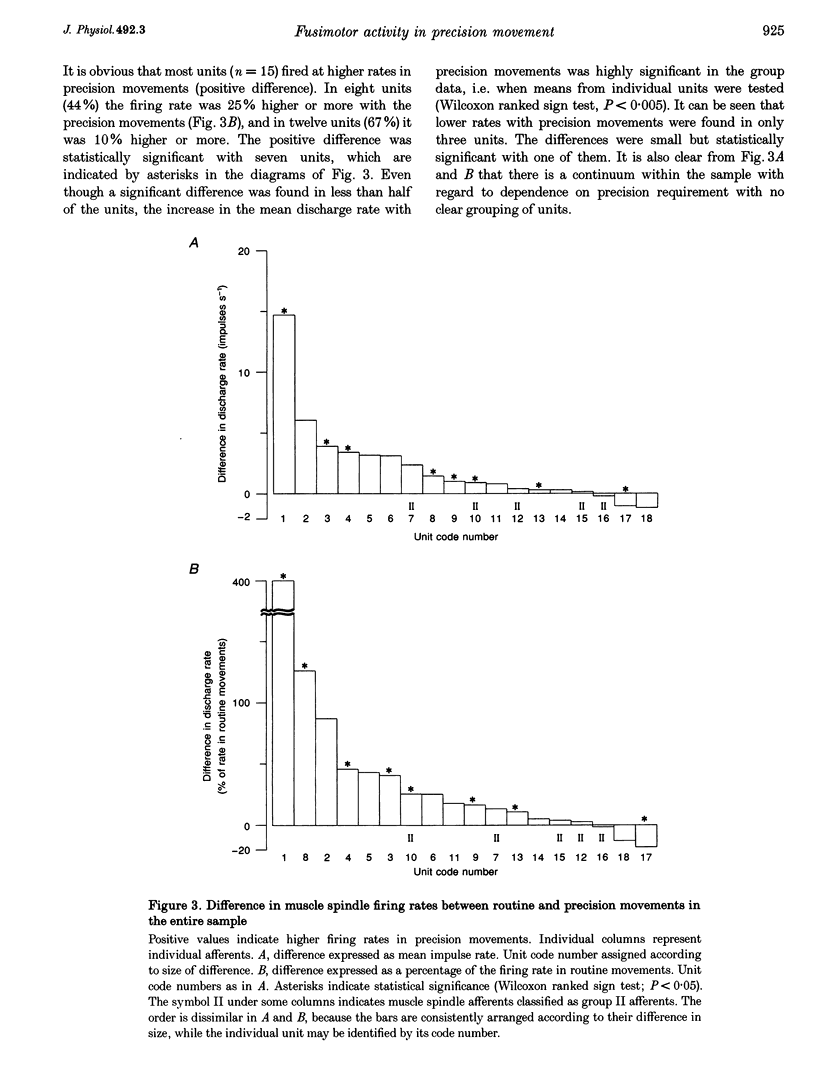
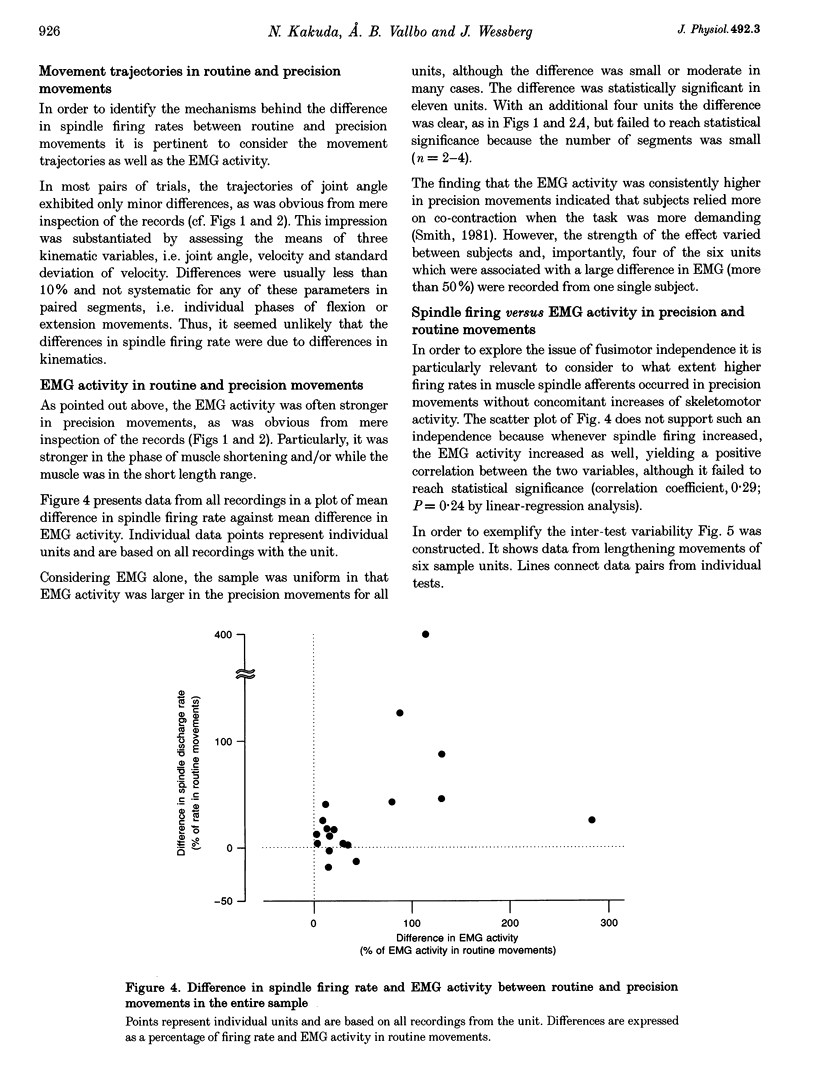
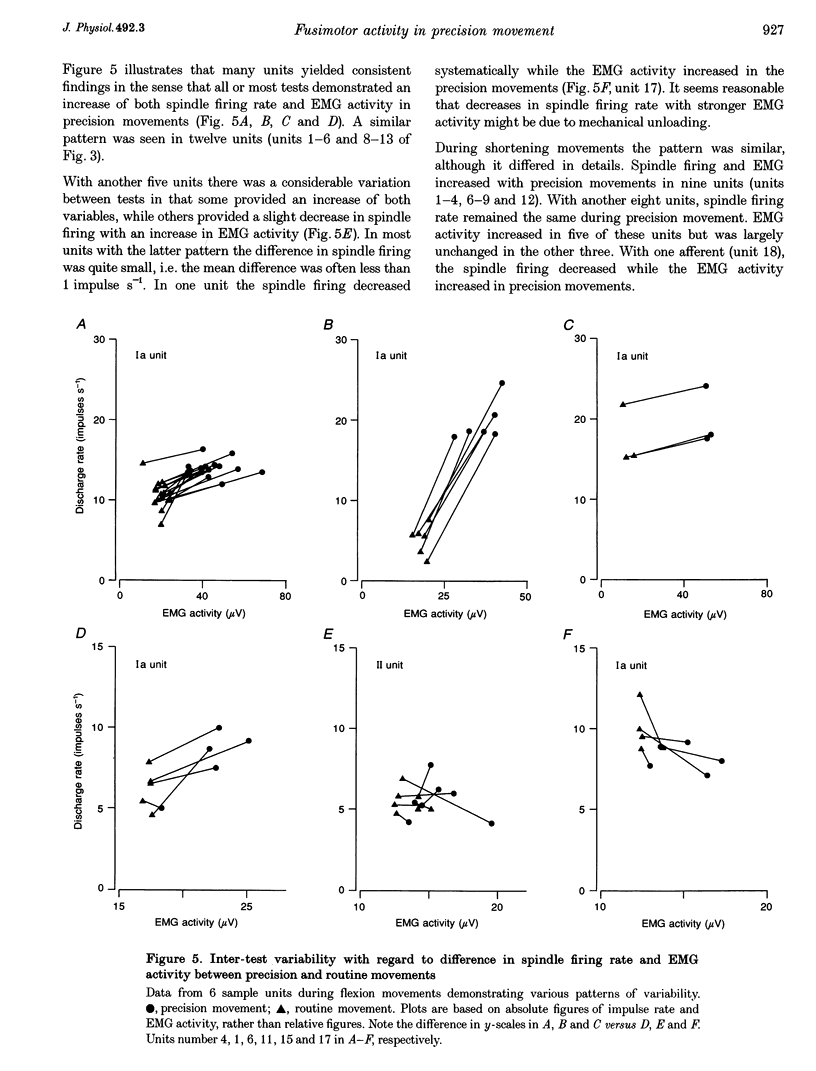
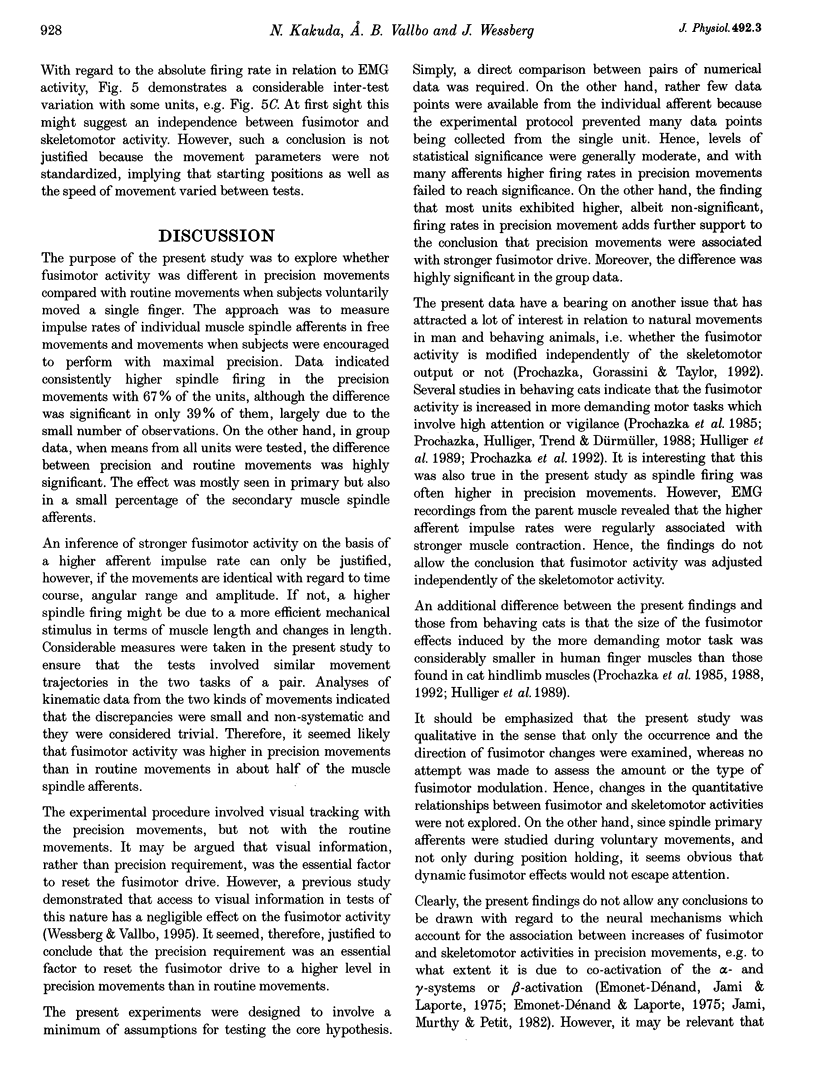
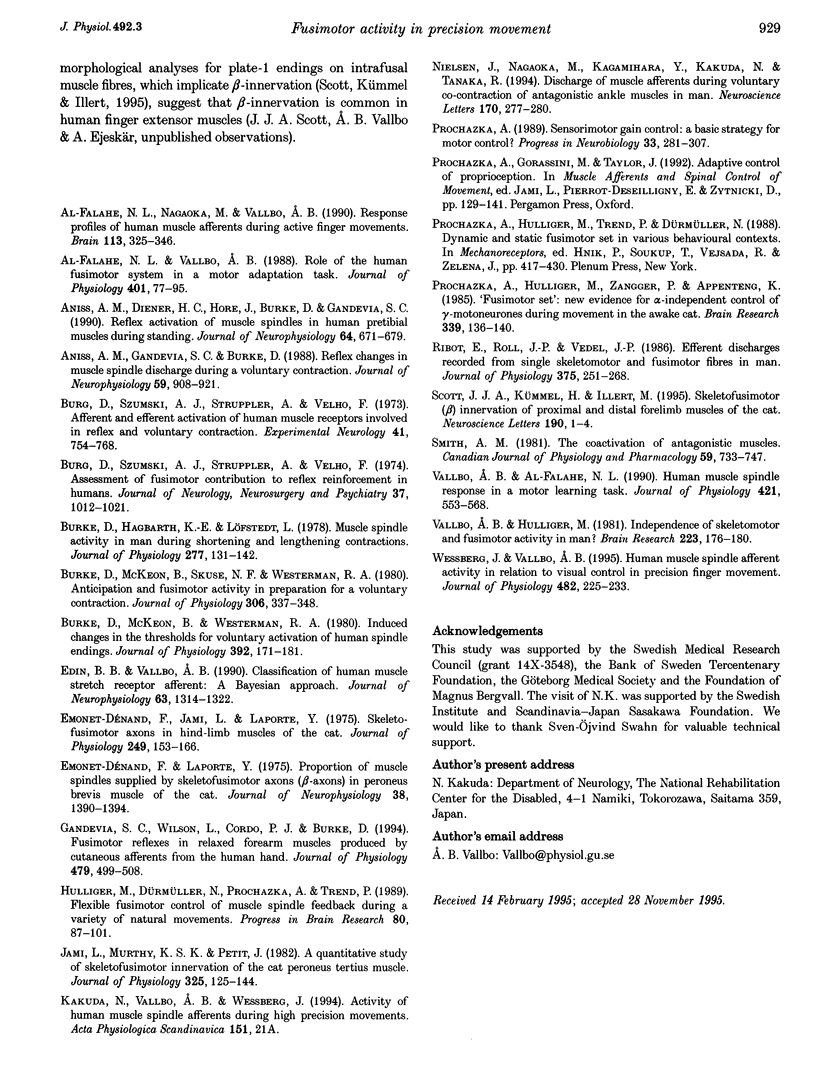
Selected References
These references are in PubMed. This may not be the complete list of references from this article.
- Al-Falahe N. A., Vallbo A. B. Role of the human fusimotor system in a motor adaptation task. J Physiol. 1988 Jul;401:77–95. doi: 10.1113/jphysiol.1988.sp017152. [DOI] [PMC free article] [PubMed] [Google Scholar]
- Aniss A. M., Diener H. C., Hore J., Burke D., Gandevia S. C. Reflex activation of muscle spindles in human pretibial muscles during standing. J Neurophysiol. 1990 Aug;64(2):671–679. doi: 10.1152/jn.1990.64.2.671. [DOI] [PubMed] [Google Scholar]
- Aniss A. M., Gandevia S. C., Burke D. Reflex changes in muscle spindle discharge during a voluntary contraction. J Neurophysiol. 1988 Mar;59(3):908–921. doi: 10.1152/jn.1988.59.3.908. [DOI] [PubMed] [Google Scholar]
- Burg D., Szumski A. J., Struppler A., Velho F. Afferent and efferent activation of human muscle receptors involved in reflex and voluntary contraction. Exp Neurol. 1973 Dec;41(3):754–768. doi: 10.1016/0014-4886(73)90066-6. [DOI] [PubMed] [Google Scholar]
- Burke D., Hagbarth K. E., Löfstedt L. Muscle spindle activity in man during shortening and lengthening contractions. J Physiol. 1978 Apr;277:131–142. doi: 10.1113/jphysiol.1978.sp012265. [DOI] [PMC free article] [PubMed] [Google Scholar]
- Burke D., McKeon B., Skuse N. F., Westerman R. A. Anticipation and fusimotor activity in preparation for a voluntary contraction. J Physiol. 1980 Sep;306:337–348. doi: 10.1113/jphysiol.1980.sp013400. [DOI] [PMC free article] [PubMed] [Google Scholar]
- Burke D., McKeon B., Westerman R. A. Induced changes in the thresholds for voluntary activation of human spindle endings. J Physiol. 1980 May;302:171–181. doi: 10.1113/jphysiol.1980.sp013236. [DOI] [PMC free article] [PubMed] [Google Scholar]
- Edin B. B., Vallbo A. B. Classification of human muscle stretch receptor afferents: a Bayesian approach. J Neurophysiol. 1990 Jun;63(6):1314–1322. doi: 10.1152/jn.1990.63.6.1314. [DOI] [PubMed] [Google Scholar]
- Emonet-Dénand F., Jami L., Laporte Y. Skeleto-fusimotor axons in the hind-limb muscles of the cat. J Physiol. 1975 Jul;249(1):153–166. doi: 10.1113/jphysiol.1975.sp011008. [DOI] [PMC free article] [PubMed] [Google Scholar]
- Emonet-Dénand F., Laporte Y. Proportion of muscles spindles supplied by skeletofusimotor axons (beta-axons) in peroneus brevis muscle of the cat. J Neurophysiol. 1975 Nov;38(6):1390–1394. doi: 10.1152/jn.1975.38.6.1390. [DOI] [PubMed] [Google Scholar]
- Gandevia S. C., Wilson L., Cordo P. J., Burke D. Fusimotor reflexes in relaxed forearm muscles produced by cutaneous afferents from the human hand. J Physiol. 1994 Sep 15;479(Pt 3):499–508. doi: 10.1113/jphysiol.1994.sp020313. [DOI] [PMC free article] [PubMed] [Google Scholar]
- Hulliger M., Dürmüller N., Prochazka A., Trend P. Flexible fusimotor control of muscle spindle feedback during a variety of natural movements. Prog Brain Res. 1989;80:87–60. doi: 10.1016/s0079-6123(08)62202-5. [DOI] [PubMed] [Google Scholar]
- Jami L., Murthy K. S., Petit J. A quantitative study of skeletofusimotor innervation in the cat peroneus tertius muscle. J Physiol. 1982 Apr;325:125–144. doi: 10.1113/jphysiol.1982.sp014140. [DOI] [PMC free article] [PubMed] [Google Scholar]
- Nielsen J., Nagaoka M., Kagamihara Y., Kakuda N., Tanaka R. Discharge of muscle afferents during voluntary co-contraction of antagonistic ankle muscles in man. Neurosci Lett. 1994 Apr 11;170(2):277–280. doi: 10.1016/0304-3940(94)90337-9. [DOI] [PubMed] [Google Scholar]
- Prochazka A., Hulliger M., Zangger P., Appenteng K. 'Fusimotor set': new evidence for alpha-independent control of gamma-motoneurones during movement in the awake cat. Brain Res. 1985 Jul 22;339(1):136–140. doi: 10.1016/0006-8993(85)90632-8. [DOI] [PubMed] [Google Scholar]
- Prochazka A. Sensorimotor gain control: a basic strategy of motor systems? Prog Neurobiol. 1989;33(4):281–307. doi: 10.1016/0301-0082(89)90004-x. [DOI] [PubMed] [Google Scholar]
- Ribot E., Roll J. P., Vedel J. P. Efferent discharges recorded from single skeletomotor and fusimotor fibres in man. J Physiol. 1986 Jun;375:251–268. doi: 10.1113/jphysiol.1986.sp016115. [DOI] [PMC free article] [PubMed] [Google Scholar]
- Scott J. J., Kümmel H., Illert M. Skeletofusimotor (beta) innervation of proximal and distal forelimb muscles of the cat. Neurosci Lett. 1995 Apr 28;190(1):1–4. doi: 10.1016/0304-3940(95)11485-f. [DOI] [PubMed] [Google Scholar]
- Smith A. M. The coactivation of antagonist muscles. Can J Physiol Pharmacol. 1981 Jul;59(7):733–747. doi: 10.1139/y81-110. [DOI] [PubMed] [Google Scholar]
- Vallbo A. B., Hulliger M. Independence of skeletomotor and fusimotor activity in man? Brain Res. 1981 Oct 26;223(1):176–180. doi: 10.1016/0006-8993(81)90819-2. [DOI] [PubMed] [Google Scholar]
- Wessberg J., Vallbo A. B. Human muscle spindle afferent activity in relation to visual control in precision finger movements. J Physiol. 1995 Jan 1;482(Pt 1):225–233. doi: 10.1113/jphysiol.1995.sp020512. [DOI] [PMC free article] [PubMed] [Google Scholar]
- al-Falahe N. A., Nagaoka M., Vallbo A. B. Response profiles of human muscle afferents during active finger movements. Brain. 1990 Apr;113(Pt 2):325–346. doi: 10.1093/brain/113.2.325. [DOI] [PubMed] [Google Scholar]


